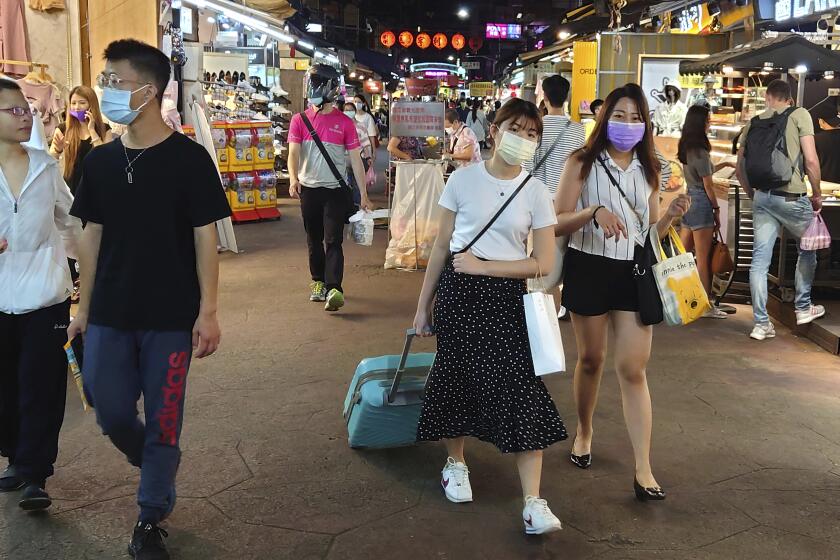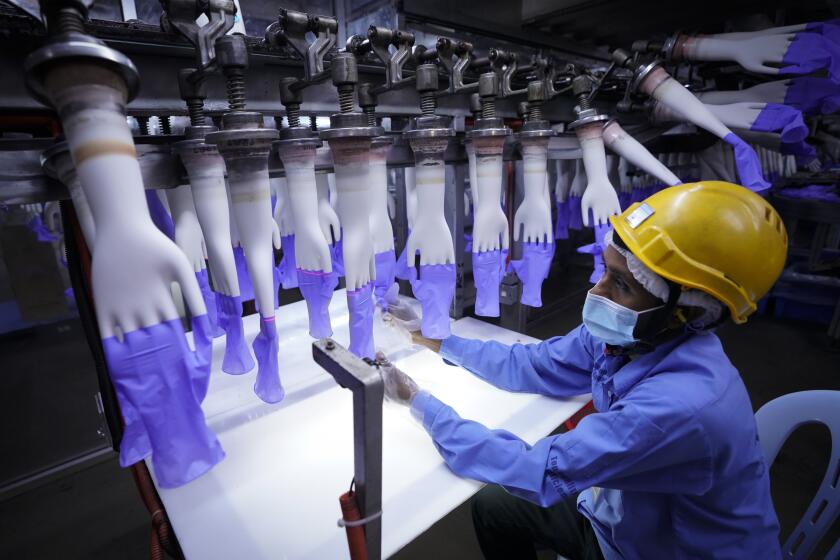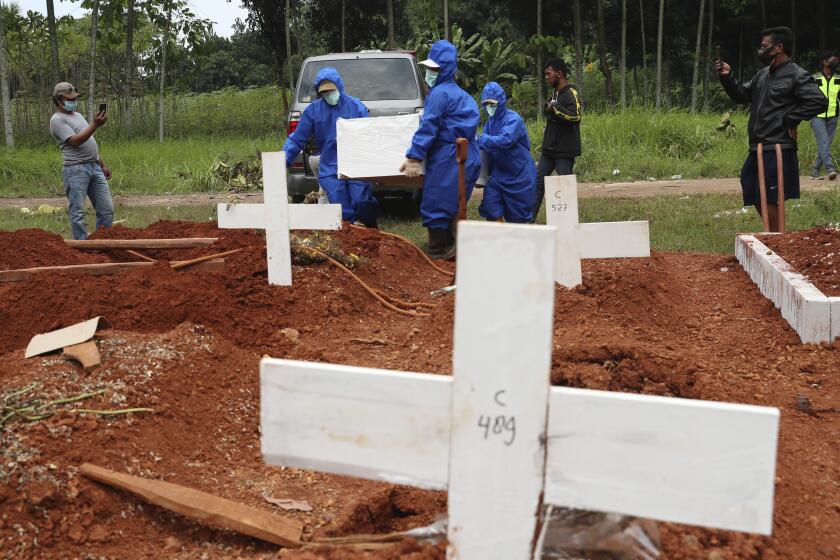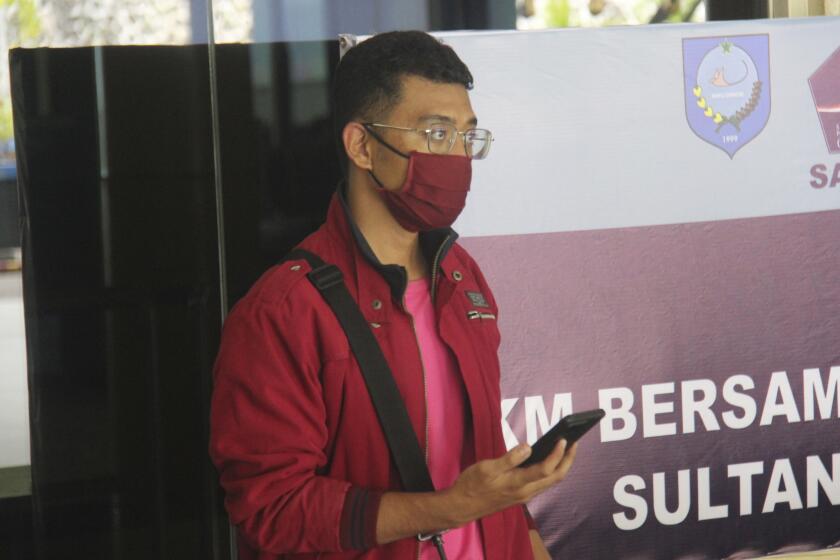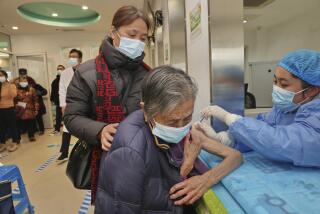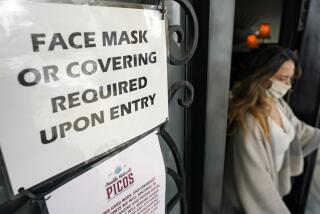Death rates soar in Southeast Asia as Delta variant fuels major new COVID wave

- Share via
KUALA LUMPUR, Malaysia — Indonesia has converted nearly its entire oxygen production to medical use just to meet the demands of COVID-19 patients struggling to breathe. Overflowing hospitals in Malaysia have resorted to treating patients on the floor. Elsewhere in Southeast Asia, graveyard workers labor day and night to keep up with the grim demand for new cremations and burials.
Images of bodies burning in open-air pyres during the peak of the pandemic in India horrified the world in May. But in the last two weeks, three Southeast Asian nations — Indonesia, Malaysia and Myanmar — have now all surpassed India’s peak per capita COVID-19 death rate as the more contagious Delta variant fuels a new coronavirus wave in the region.
The record numbers of new cases being reported in countries across the region have left healthcare systems struggling to cope and governments scrambling to implement new restrictions to try to slow the spread.
When Eric Lam tested positive for COVID-19 and was hospitalized June 17 in the Malaysian state of Selangor, the center of the country’s outbreak, the government hospital’s corridors were already crowded with beds because there was no more room in the wards.
That was actually better than in some other hospitals in Selangor, Malaysia’s richest and most populous state, where there were no free beds at all and patients were reportedly treated on floors or on stretchers. The government has since added more hospital beds and converted more wards for COVID-19 patients.
Hospitalized for three weeks, Lam, 38, recalled hearing a machine beeping by a patient’s bed for two hours before a nurse came to turn it off. He later learned the patient had died.
New variants of COVID-19 are spreading across Asia, reversing the success of governments such as Taiwan, Singapore, Vietnam and Thailand. Japan’s new outbreak is amplifying calls to cancel the Summer Olympics.
A number of factors have contributed to the recent surge in the region, including people growing weary of the pandemic and letting precautions slip, low vaccination rates and the emergence of the Delta variant, which was first detected in India, said Abhishek Rimal, the Asia-Pacific emergency health coordinator for the International Federation of Red Cross and Red Crescent Societies.
“With the measures that countries are taking, if people follow the basics of washing the hands, wearing the masks, keeping distance and getting vaccinated, we will be seeing a decline in cases in the next couple of weeks from now,” said Rimal, based in Malaysia.
So far, however, Malaysia’s national lockdown measures have not brought down the daily rate of infections. The country of some 32 million people saw daily cases rise above 10,000 on July 13 for the first time, and they have stayed there.
The vaccination rate remains low but has been picking up, with nearly 15% of the population now fully inoculated and the government hoping to have a majority vaccinated by year’s end.
U.S. trade bans are spurring labor reforms in Malaysia, which produces two-thirds of the world’s disposable gloves.
Doctors and nurses have been working tirelessly to try to keep up, and Lam was one of the fortunate ones.
After his condition initially deteriorated, he was put on a ventilator in an ICU unit filled to capacity and slowly recovered. He was discharged two weeks ago.
But he lost his father and brother-in-law to COVID-19, and another brother remains on a ventilator.
“I feel I have been reborn and given a second chance to live,” he said.
Indonesia reported more than 54,000 coronavirus cases in a day, surpassing recent daily infections in India, whose disastrous outbreak is declining.
With a massive population of nearly 1.4 billion people, India has a higher total number of COVID-19 fatalities than the countries in Southeast Asia. But its seven-day rolling average of deaths per 1 million people peaked at 3.04 in May, according to the scientific website Our World in Data, and continues to decline.
Indonesia, Myanmar and Malaysia have been showing sharp increases since late June, and their seven-day averages of COVID-19 deaths hit 4.37, 4.29 and 4.14 per million, respectively, on Wednesday. Cambodia and Thailand have also seen strong increases in both coronavirus cases and deaths, but have thus far held the seven-day rate to a lower 1.55 and 1.38, respectively.
Individual countries elsewhere have higher rates, but the increases in Southeast Asia are particularly alarming for a region that widely kept numbers low early in the pandemic.
With the Indian experience as a lesson, most countries have reacted relatively quickly with new restrictions to slow the coronavirus and to try to meet the needs of the burgeoning number of people hospitalized with severe illnesses, Rimal said.
News Alerts
Get breaking news, investigations, analysis and more signature journalism from the Los Angeles Times in your inbox.
You may occasionally receive promotional content from the Los Angeles Times.
“People in this region are cautious, because they have seen it right in front of them — 400,000 cases a day in India — and they really don’t want it to repeat here,” he said.
But those measures take time to achieve the desired effect, and right now countries are struggling to cope.
Indonesia, the world’s fourth-most populous nation, with some 270 million people, reported 1,449 deaths Thursday, its deadliest day since the start of the pandemic.
Daily coronavirus cases through about mid-June had been about 8,000, but then began to spike and peaked last week with more than 50,000 new infections a day. Because Indonesia’s testing rate is low, the actual number of new cases is thought to be much higher.
An Indonesian man with the coronavirus boarded a domestic flight disguised as his wife to evade COVID-19 protocols, but was quickly found out.
As hospitals there began to run out of oxygen, the government stepped in and ordered manufacturers to shift most production from industrial purposes and dedicate 90% to medical oxygen, up from 25%.
Before the current crisis, the country needed 400 tons of oxygen for medical use per day; with the sharp rise in COVID-19 cases, daily use has increased fivefold to more than 2,000 tons, according to Deputy Health Minister Dante Saksono.
Though the production of oxygen is now sufficient, Lia Partakusuma, secretary general of the Indonesian Hospital Assn., said there were problems with distribution, so some hospitals are still facing shortages.
In Indonesia, about 14% of the population has had at least one vaccine dose, primarily of China’s Sinovac.
There are growing concerns that Sinovac is less effective against the Delta variant, and both Indonesia and Thailand are planning booster shots of other vaccines for their Sinovac-immunized health workers.
More to Read
Sign up for Essential California
The most important California stories and recommendations in your inbox every morning.
You may occasionally receive promotional content from the Los Angeles Times.
